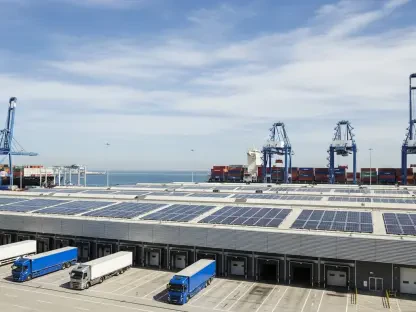I’m thrilled to sit down with Marco Gaietti, a seasoned expert in business management with decades of experience in strategic management and operations. Today, we’re diving into the dynamic world of cryptocurrency, specifically focusing on the recent developments surrounding Avalanche (AVAX) and its impressive market performance. Marco brings a unique perspective to the table, blending his deep understanding of business strategy with insights into blockchain technology. In this interview, we’ll explore the catalysts behind AVAX’s recent price surge, the significance of Avalanche’s real-world asset initiatives, the technical indicators shaping market sentiment, key price levels to watch, and the risk-reward dynamics for potential investors.
How have recent developments like the $250 million real-world asset tokenization initiative influenced AVAX’s dramatic 47% price surge over the past week?
The $250 million initiative to tokenize real-world assets (RWA) has been a game-changer for Avalanche and a major driver behind AVAX’s 47% price jump. This move signals to the market that Avalanche is serious about bridging traditional finance with blockchain technology, which has sparked significant investor interest. By enabling the tokenization of assets like real estate or commodities, Avalanche is creating new use cases for its platform, driving demand for AVAX as the native token. This kind of fundamental catalyst often outweighs short-term market noise and can sustain upward momentum if executed well.
What impact do you think the anticipation around the July 28 ETF decision has had on investor sentiment toward AVAX?
The buzz around the July 28 ETF decision has definitely played a big role in shaping investor sentiment. ETFs are seen as a stamp of legitimacy in the crypto space, often bringing in institutional money and retail interest. Even before the decision, the speculation alone fueled optimism, contributing to the bullish momentum for AVAX. It’s a psychological boost—investors start pricing in potential growth, and you see that reflected in the price action leading up to such events. Even with today’s slight dip, the ETF anticipation has kept the market engaged.
Can you elaborate on how Avalanche’s focus on real-world asset tokenization sets it apart from other blockchain platforms?
Avalanche’s push into RWA tokenization with a $250 million backing positions it as a frontrunner in a niche that’s gaining traction across the industry. Unlike some platforms that focus solely on DeFi or NFTs, Avalanche is targeting traditional assets—think real estate, bonds, or even art—and bringing them on-chain. This opens up liquidity for assets that are typically illiquid, and Avalanche’s high-speed, low-cost transactions make it an ideal platform for this. Compared to competitors, Avalanche’s scalability and subnet architecture give it an edge in handling institutional-grade applications, which could attract major financial players over time.
What types of traditional assets do you see as the most promising for tokenization on Avalanche’s platform?
I believe real estate and debt instruments are among the most promising assets for tokenization on Avalanche. Real estate, for instance, is a massive market, but it’s often inaccessible to smaller investors due to high entry barriers. Tokenizing property allows fractional ownership, which democratizes access. Similarly, bonds or other fixed-income assets can be tokenized to improve liquidity and transparency. Avalanche’s infrastructure is well-suited for these use cases because of its ability to process high transaction volumes efficiently, which is critical for markets that require speed and reliability.
Looking at AVAX’s technical indicators, how do you interpret an RSI of 55.33 in the context of its recent rally?
An RSI of 55.33 places AVAX in a neutral zone, which is somewhat surprising given the 47% rally we’ve seen recently. Typically, after such a strong upward move, you’d expect the RSI to be in overbought territory, closer to 70 or above. This neutrality suggests that there’s still room for upward movement before the market considers AVAX overextended. It also indicates that the rally hasn’t been driven by reckless speculation but rather by solid fundamentals, which could bode well for sustained growth if other factors align.
What concerns, if any, do you have about the bearish divergence in the MACD histogram for AVAX’s short-term momentum?
The bearish divergence in the MACD histogram, sitting at -0.2081, does raise a caution flag for short-term price action. It suggests that while the price has been climbing, the underlying momentum is starting to weaken. This kind of divergence often precedes a pullback or consolidation as buyers lose steam. For traders, it’s a reminder to be vigilant—don’t chase the price blindly. However, it’s not a definitive sell signal; it just means we might see some profit-taking or sideways movement before the next leg up, especially if fundamental catalysts remain strong.
How significant are the Bollinger Bands, with an upper band at $26.77 and a lower band at $20.84, in shaping your view on AVAX’s potential price movements?
The Bollinger Bands provide a useful framework for understanding AVAX’s current range. With the price at $23.94, sitting in the middle of the bands, it indicates that AVAX isn’t at an extreme—neither overbought nor oversold. The upper band at $26.77 acts as a near-term target for bulls; breaking through that could signal a stronger breakout. Conversely, the lower band at $20.84 offers a safety net, suggesting where support might kick in if selling pressure increases. For now, trading in the middle suggests indecision, and traders should watch for a decisive move toward either band to gauge direction.
Why do you think the resistance level at $27.38 is such a critical barrier for AVAX to overcome?
The resistance at $27.38 is significant because it aligns with a psychological level around $27, where historically, AVAX has struggled to break through. These levels often become self-fulfilling prophecies—traders place sell orders there, expecting a reversal, which creates a wall of resistance. Additionally, after a 47% rally, some investors might see this as a natural point to lock in profits, adding to the selling pressure. If AVAX can push past this with strong volume, it could open the door to higher targets, but until then, it’s a tough hurdle.
What could be the implications for AVAX if it drops below the support level of $20.18?
If AVAX falls below the $20.18 support, it could signal the start of a deeper correction. This level represents a recent consolidation zone, so a break below it might shake investor confidence and trigger stop-loss orders, accelerating the decline. We could see the price test even lower supports, potentially down to $15.61, which is a more significant long-term floor. For now, though, such a drop would likely be seen as a buying opportunity by long-term holders, especially given the strong fundamentals, but it would definitely introduce short-term bearish sentiment.
How does the current risk-reward profile for AVAX look for different types of traders, such as swing traders or conservative investors?
For swing traders, the risk-reward profile looks fairly attractive right now, especially with AVAX holding above $23. The recent rally and technical support levels suggest there’s still upside potential, particularly if it breaks above $24.28. However, they should keep position sizes modest due to mixed technical signals like the MACD divergence. For conservative investors, waiting for a pullback to around $20.18 might offer a better entry point with a clearer risk boundary. The fundamentals are strong, but the current price doesn’t scream “bargain,” so patience could pay off for those with a longer horizon.
What is your forecast for AVAX’s price trajectory in the coming weeks, given the mix of fundamental drivers and technical indicators?
Looking ahead, I’m cautiously optimistic about AVAX’s price trajectory over the next few weeks. The fundamental drivers, like the RWA initiative and ETF speculation, provide a solid foundation for growth, and the neutral RSI suggests there’s room for more upside before overbought conditions kick in. However, the bearish MACD divergence and resistance at $27.38 temper my enthusiasm for an immediate breakout. I think we’re likely to see some consolidation between $23 and $26 in the near term, with a potential push higher if fresh catalysts emerge. Traders should keep a close eye on volume and key levels like $24.28 for confirmation of the next big move.









